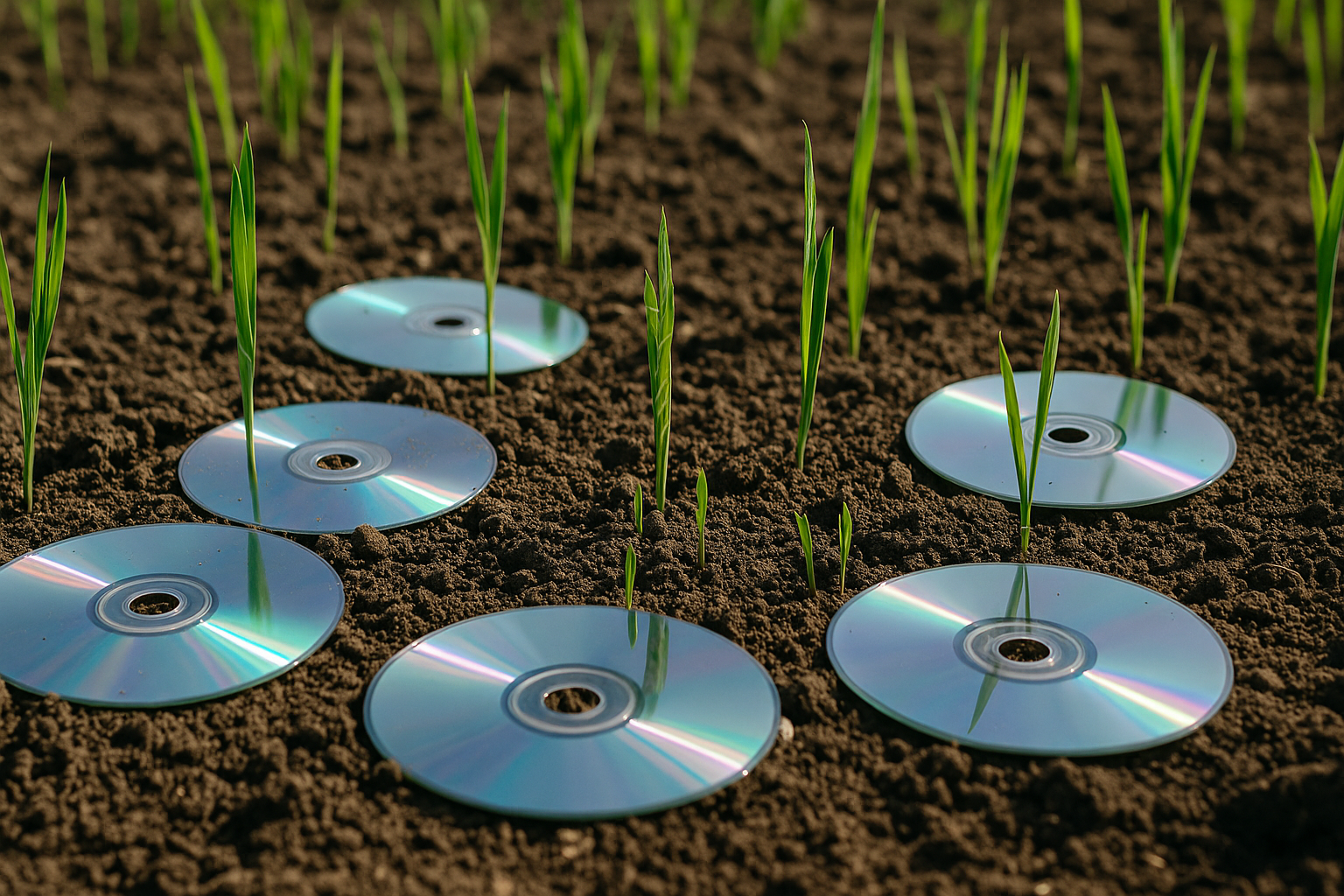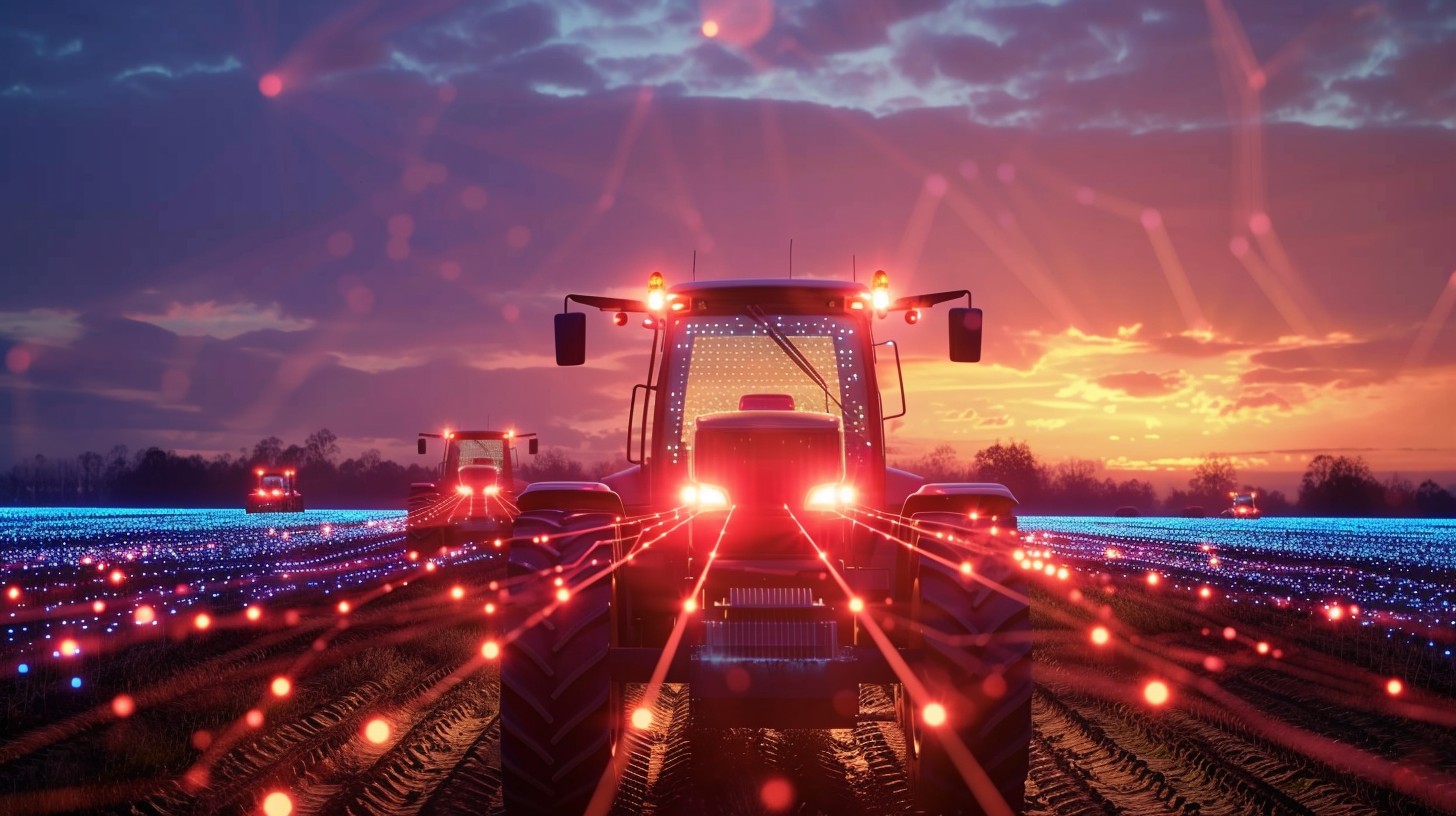In the age of autonomous tractors and drone-sprayed fields, it’s easy to assume that artificial intelligence is a tool built exclusively for the agri-giants—those with sprawling acres, deep pockets, and in-house data scientists. But what about the small farm tucked behind the hills? The one run by a few family members, with aging equipment, a patchy internet connection, and no tech department in sight?
For decades, smallholders have been squeezed between rising costs, climate unpredictability, and the buying power of mega-farms. As agriculture races toward digital transformation, the fear is that AI will only widen that gap—another layer of complexity that benefits the powerful and leaves the rest behind.
But a quiet shift is underway. From mobile apps that diagnose crop diseases using a photo, to low-cost sensor kits paired with machine learning, artificial intelligence is beginning to trickle down. Not in billion-dollar agri-tech labs, but in dusty fields and cooperative sheds, where small farms are finding ways to make AI work on their terms.
So, can AI really help the little guy compete with global agribusiness? Or is it just another tool designed for someone else’s farm?
Small Farms, Big Pressures
Life on a small farm has never been simple. But in the past decade, the stakes have changed—and not in the farmer’s favor. Input prices climb steadily upward, while market prices remain volatile. A single storm or late frost can erase months of work. Labor is scarce, paperwork is endless, and machinery often dates back to another era.
At the same time, large-scale farms are evolving rapidly—adopting AI-driven irrigation systems, predictive analytics, and fleets of autonomous equipment. Their size gives them leverage, not just in the marketplace, but in data collection too. More fields mean more sensors, more weather patterns, more insights—and more power to act on them.
Smallholders, by contrast, often don’t have the luxury of experimentation. A failed crop isn’t a learning moment—it’s a financial crisis. And investing in artificial intelligence? That can sound like science fiction.
But here’s the twist: AI is getting cheaper, more accessible, and—surprisingly—more relevant to small-scale farming. You no longer need drones and data warehouses. Sometimes, all it takes is a smartphone and an internet signal. And increasingly, the solutions being built for small farms aren’t watered-down versions of enterprise software—they’re tailor-made, designed for the constraints and realities of those working at ground level.
So while the pressure is real, so is the opportunity—if farmers can find the right tools, and if those building AI know who they’re building it for.
How AI Is Finding Its Way Into the Fields
Walk onto a small farm in western Kenya or rural India today, and you might be surprised by what you see. No drones in the sky, no fleets of self-driving tractors—but perhaps a farmer, standing in a field, pointing their phone at a diseased leaf. Within seconds, an app diagnoses the problem, recommends treatment, and even calculates dosage based on acreage and weather conditions. That’s AI—not as a luxury, but as a survival tool.
This isn’t theoretical. Tools like PlantVillage, backed by Penn State and FAO, are helping smallholders detect crop diseases with nothing more than image recognition and machine learning models trained on thousands of leaf patterns. Meanwhile, platforms like Microsoft’s FarmBeats are making it possible to pair low-cost sensors with AI to predict irrigation needs—even in regions with minimal connectivity.
The most striking part? Many of these tools are built for simplicity. No tech jargon. No dashboards full of blinking graphs. Just clean interfaces, local languages, and offline-first design. In places where 4G is a maybe and formal education varies, these design choices are not preferences—they’re lifelines.
And then there’s Hello Tractor—sometimes dubbed “Uber for Tractors.” It connects tractor owners with farmers who need machinery but can’t afford to buy. The platform uses AI to match demand with availability, optimize routes, and analyze usage data to improve service delivery. It’s not just about moving machines—it’s about moving opportunity.
For these farmers, AI isn’t a futuristic layer on top of their work—it’s becoming part of how they make decisions every day. Quietly, efficiently, and often invisibly, machine learning is doing the math that would take hours. It’s offering a second opinion in the field. And it’s putting technology into hands that have long been overlooked.
What’s Still in the Way
For all the promise, there’s still a long road ahead. While AI is inching closer to the small farm, it hasn’t exactly arrived with a welcome mat and easy setup. The first and most obvious barrier is infrastructure—or the lack of it. Many rural areas still struggle with reliable internet, power outages, or even basic smartphone access. Without connectivity, even the best-designed AI tools are like tractors with no fuel.
Then comes the issue of trust. Technology, especially when it’s wrapped in unfamiliar language, often feels risky. For farmers whose margins are razor-thin, the idea of relying on an algorithm — one they can’t see or fully understand—can feel like handing the steering wheel to a stranger. And in a world where bad advice can mean a ruined crop, skepticism isn’t just natural; it’s smart.
Another hurdle? Localization. Many AI tools are trained on data from North America or Europe—regions with different crops, climates, and soil profiles. Applying those models in Tanzania or Ukraine or Colombia without retraining can lead to bad results. It’s like bringing a snowplow to a monsoon.
There’s also the human element. Even when tools are free and functional, there’s a learning curve. Smallholders often lack training opportunities, support staff, or time to experiment. They need onboarding, not just access. They need AI that meets them halfway — or better yet, starts from where they are.
Despite these challenges, the momentum is growing. NGOs, agri-tech startups, and even government agencies are beginning to understand that democratizing AI in agriculture means more than exporting software. It means building relationships, respecting local knowledge, and designing for the realities of rural life.
And when those pieces start to come together, something remarkable happens. AI stops being an abstract trend—and starts becoming a genuine tool for resilience.
What Needs to Happen Next
If artificial intelligence is going to genuinely empower small farms—not just talk about them in pitch decks—a few things need to change. And fast.
First, design needs to get even more grounded. That means building tools that don’t assume fiber-optic internet, college-level English, or staff trained in data entry. The best solutions will work offline, talk in local languages, and run on second-hand Android phones. They’ll feel less like tech platforms, and more like practical helpers—baked into the rhythms of farm life, not layered on top of it.
Second, partnerships matter. Governments, NGOs, agri-cooperatives, and private tech companies each hold a piece of the puzzle. It takes all of them to make AI reach the last mile—through training, financing, and ongoing support. A free app is meaningless if no one teaches you how to use it, and a sensor isn’t smart if it sits in a box.
Third, business models need to meet farmers where they are. The “enterprise SaaS subscription” model doesn’t work for a grower who sells crops twice a year and manages finances in cash. Instead, we’re seeing a rise in usage-based pricing, shared ownership models, and even “AI-as-a-service” cooperatives—systems that understand seasonal cash flow and community dynamics.
And finally, the narrative has to shift. Small farmers shouldn’t be treated as passive “beneficiaries” of technology. They are the clients, the experts, the innovators in their own right. The most effective AI solutions will be the ones that are built with farmers, not just for them.
AI Won’t Save Small Farms—But It Might Help Them Win
Artificial intelligence isn’t a silver bullet. It won’t fix unfair trade policies, reverse climate change, or magically level the playing field in a globalized food economy. But it can give small farms sharper tools, faster insights, and just a little more room to breathe.
Used wisely, AI becomes less about automation and more about augmentation—a digital co-pilot for people who already know their land inside out. It can help farmers spot disease early, plan harvests better, cut waste, and sell smarter. And in a world where one bad season can wipe out a family’s income, those small edges matter.
What’s most exciting is that this isn’t a dream for the future. It’s already happening—quietly, creatively, and in some of the most overlooked corners of the agricultural world. The question now isn’t whether small farms can use AI. It’s how quickly we can get the right tools into the right hands.
Because when it comes to the future of food—size doesn’t have to be destiny.
Table: How AI Is Used: Small Farms vs. Big Ag
| Use Case | Small Farms | Large Agribusiness |
|---|---|---|
| Crop Monitoring | Smartphone apps with AI image recognition | Satellite + drone imagery, multispectral analytics |
| Irrigation Management | Low-cost sensors + mobile alerts | Automated AI-controlled irrigation systems |
| Equipment Access | AI-powered tractor sharing platforms (e.g. Hello Tractor) | In-house fleets with predictive maintenance AI |
| Pest & Disease Detection | AI chatbots, photo-based diagnosis apps | Computer vision + real-time field sensors |
| Yield Forecasting | Mobile apps using local weather + soil data | Machine learning models trained on big data sets |
| Decision Support | Simple, localized recommendations via phone | Full-farm dashboards with AI scenario modeling |
| Cost Model | Pay-as-you-go, freemium, NGO-supported access | Enterprise licenses or proprietary platforms |
| Connectivity Needs | Offline-first, SMS/voice-enabled tools | Always-on, high-bandwidth infrastructure |


